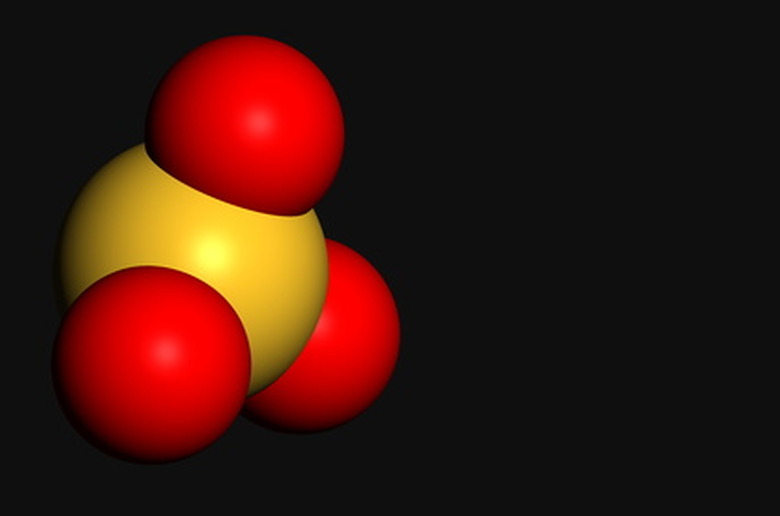How To Calculate Polarity
With some chemical knowledge, you can fairly easily guess if a molecule will be polar or not. Each atom will have a different level of electronegativity, or ability to attract electrons. Actually calculating the polarity of a molecule precisely, however, requires determining the shape of the molecule and performing vector addition. The length of each vector will correspond to the electronegativity of the atom in each bond. The direction of the vector will correspond to molecular shape.
Step 1
Draw the molecule in standard chemical format, with all atoms and free electrons shown in the drawing.
Step 2
Determine the shape of the molecule. With one or two bonded atoms, the molecule will be linear. With two bonded atoms and unbonded electrons, the molecule will be angular. With three bonded atoms and no free electrons, the molecule will be flat triangular. With three bonded atoms and a set of free electrons, the molecule will be triangular, pyramidal. With four bonded atoms, the molecule will be pyramidal.
Step 3
Determine the electronegativity of each atom in the molecule. Use a standard measurement, such as a centimeter per whole unit of electronegativity, to determine the length of each vector.
Step 4
Draw a vector of the appropriate length for each atom that you determined vector length. Draw them facing the direction they would face in the molecule, according to the shape determined in Step 2.
Step 5
Line up the vectors end to end. The distance between your starting point and the final vector is the measurement of polarity in the molecule. For example, if you used 1 cm per whole unit of electronegativity, and your final distance between the last vector and your starting point is 5 mm, the molecule has a polarity of 0.5 in that direction.
TL;DR (Too Long; Didn't Read)
Many chemistry books list polarity measurements of common molecules.
If estimating polarity, look for atoms like oxygen or fluorine, which have strong electronegativity. If they are on one side of the molecule and not the other, it is likely that the molecule is polar in that direction.
Warning
Calculating polarity of a molecule becomes increasingly complicated as a molecule increases in size and is typically calculated with a computer. This technique primarily works for small molecules.
Cite This Article
MLA
Ward, David. "How To Calculate Polarity" sciencing.com, https://www.sciencing.com/calculate-polarity-7153339/. 24 April 2017.
APA
Ward, David. (2017, April 24). How To Calculate Polarity. sciencing.com. Retrieved from https://www.sciencing.com/calculate-polarity-7153339/
Chicago
Ward, David. How To Calculate Polarity last modified March 24, 2022. https://www.sciencing.com/calculate-polarity-7153339/
